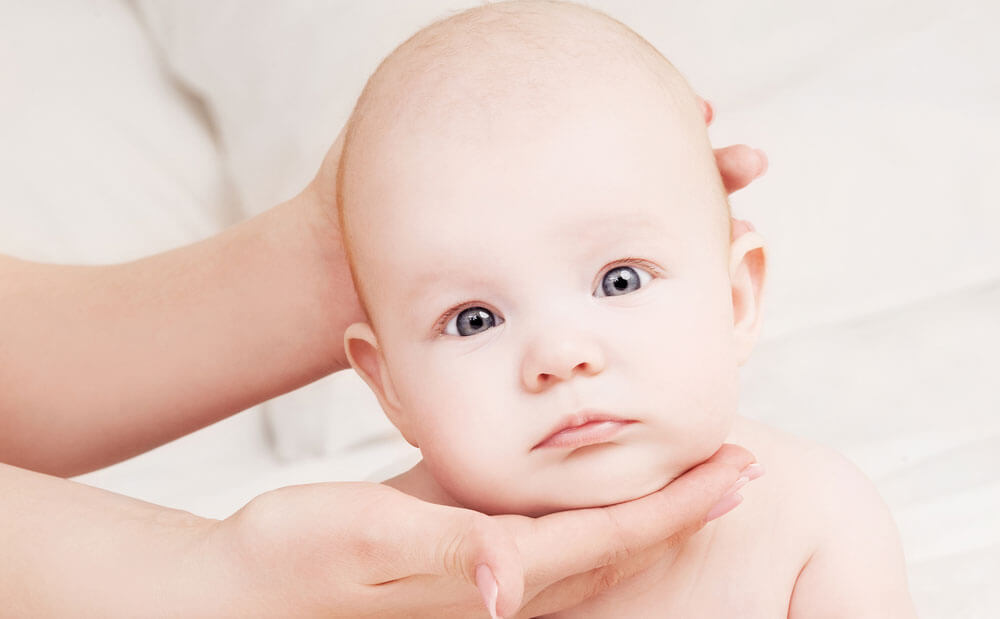Physical Therapy is the #1 Treatment for Torticollis

Torticollis is a relatively common condition that babies can develop in utero or after birth. While there are alternative treatment options that some families choose to participate in, physical therapy is the preferred treatment intervention for torticollis. 7/10 of the top 10 children’s hospitals in the United States specifically recommend physical therapy for the treatment of torticollis. None of the top 10 children’s hospitals in the United States recommend any alternative treatment options.
What separates physical therapy from other treatment approaches?
Interventions used by physical therapists are evidence (research) based, therefore, are proven to be effective. Little to no research exists to support alternative treatment interventions, such as cervical spine manipulation, craniosacral therapy, Total Motion Release, or the Feldenkrais method.
Physical therapists will screen for conditions associated with torticollis, including cranial deformity, developmental dysplasia of the hip, brachial plexus injuries, lower extremity and foot deformities, temporomandibular (jaw) dysfunction, feeding difficulties (asymmetrical jaw positioning, preference to feed on one side, tightness and/or weakness in the facial muscles), and finally gross motor delays.
Physical therapists will perform a thorough evaluation of body structure and function, including:
- Posture and tolerance in multiple positions
- Passive range of motion
- Active range of motion
- Craniofacial and skull asymmetry (flat spots on the head) with measurements
- Motor skill development (infants with torticollis have a higher prevalence of gross motor delay at 2 and 6 months, and physical therapists are qualified and trained to administer gross motor standardized assessments)
- Symmetry of movement to the right and left
- Assessment of positioning at home (sleep and awake time, feeding, tummy time, and time spent in equipment such as swings and bouncers)
- Complete screens of the visual, gastrointestinal, neurological, musculoskeletal, and cardiopulmonary systems
- Elimination of other causes of head/neck asymmetry
Physical therapy can prevent secondary complications related to torticollis.
Physical therapy can prevent secondary complications, such as delayed or asymmetric motor skill development. Babies with torticollis are more likely to prefer to roll one direction and shift their weight more to one side. Similarly, they are more likely to reach with one hand over the other on their stomach and get up into sitting to only one direction. Finally, they are at greater risk for crawling with a tripod pattern. This happens when one knee and one foot are on the ground instead of both knees being on the ground.
Physical therapists will provide ongoing education to parents. First, parents will be educated at the time of the evaluation, and then continuously throughout treatment as interventions change and progress is made. Education includes tummy time, visual tracking, positioning, home exercises, environmental setup, information about supplemental equipment, and sleep and feeding recommendations.
Even if you seek alternative methods of intervention for your baby, it should be in conjunction with physical therapy to ensure that all aspects of torticollis are addressed and treated so additional concerns and complications do not come up in the future. Pediatric physical therapy at MOSAIC can help!
Click here for more information and to see the American Physical Therapy Clinical Practice Guidelines for the treatment of torticollis.
References:
- Kaplan SL, Coulter C, Sargent B. Physical therapy management of congenital muscular torticollis: a 2018 evidence-based clinical practice guideline from the APTA Academy of Pediatric Physical Therapy. Pediatr Phys Ther. 2018; 30:240-290.
